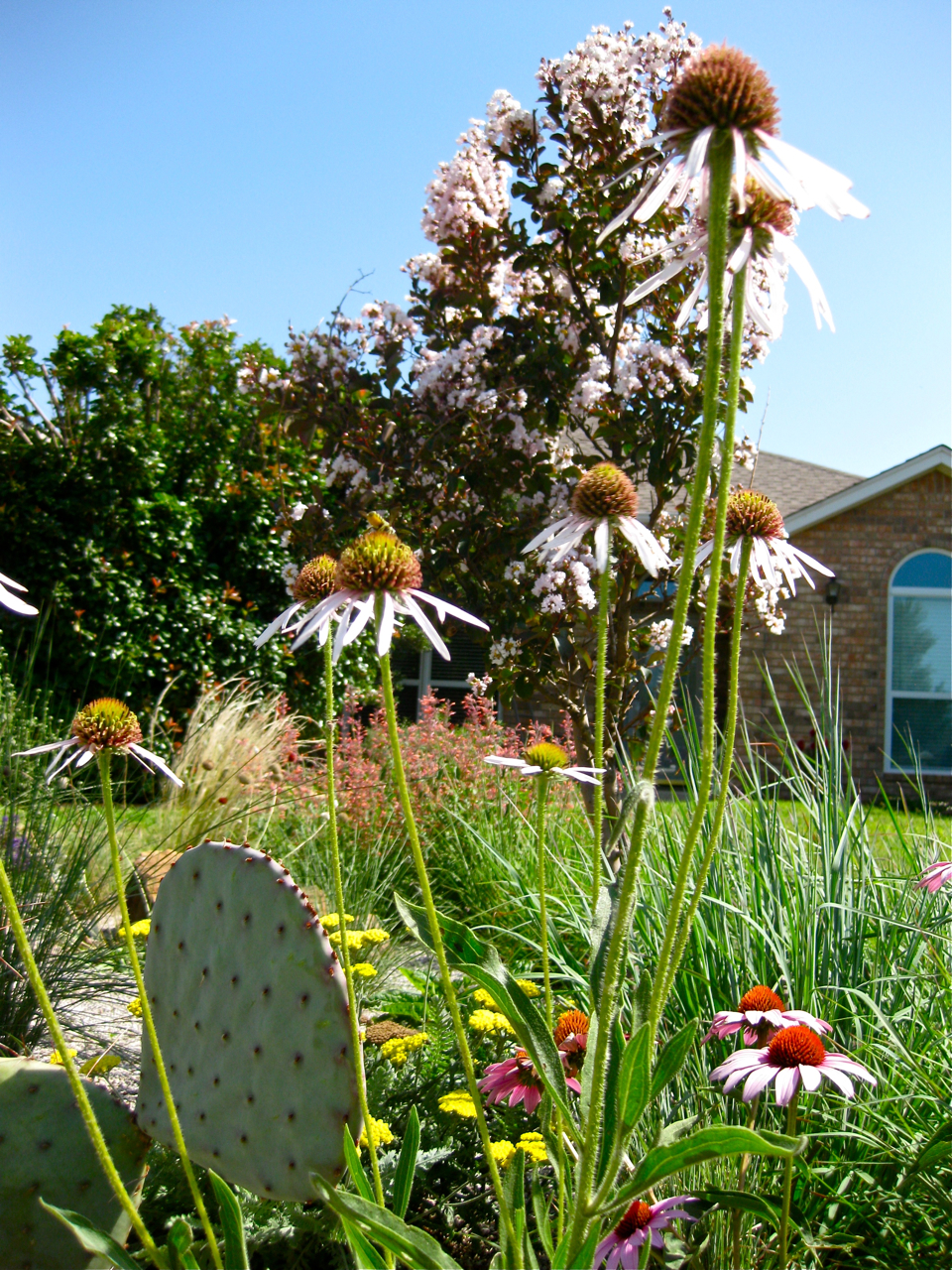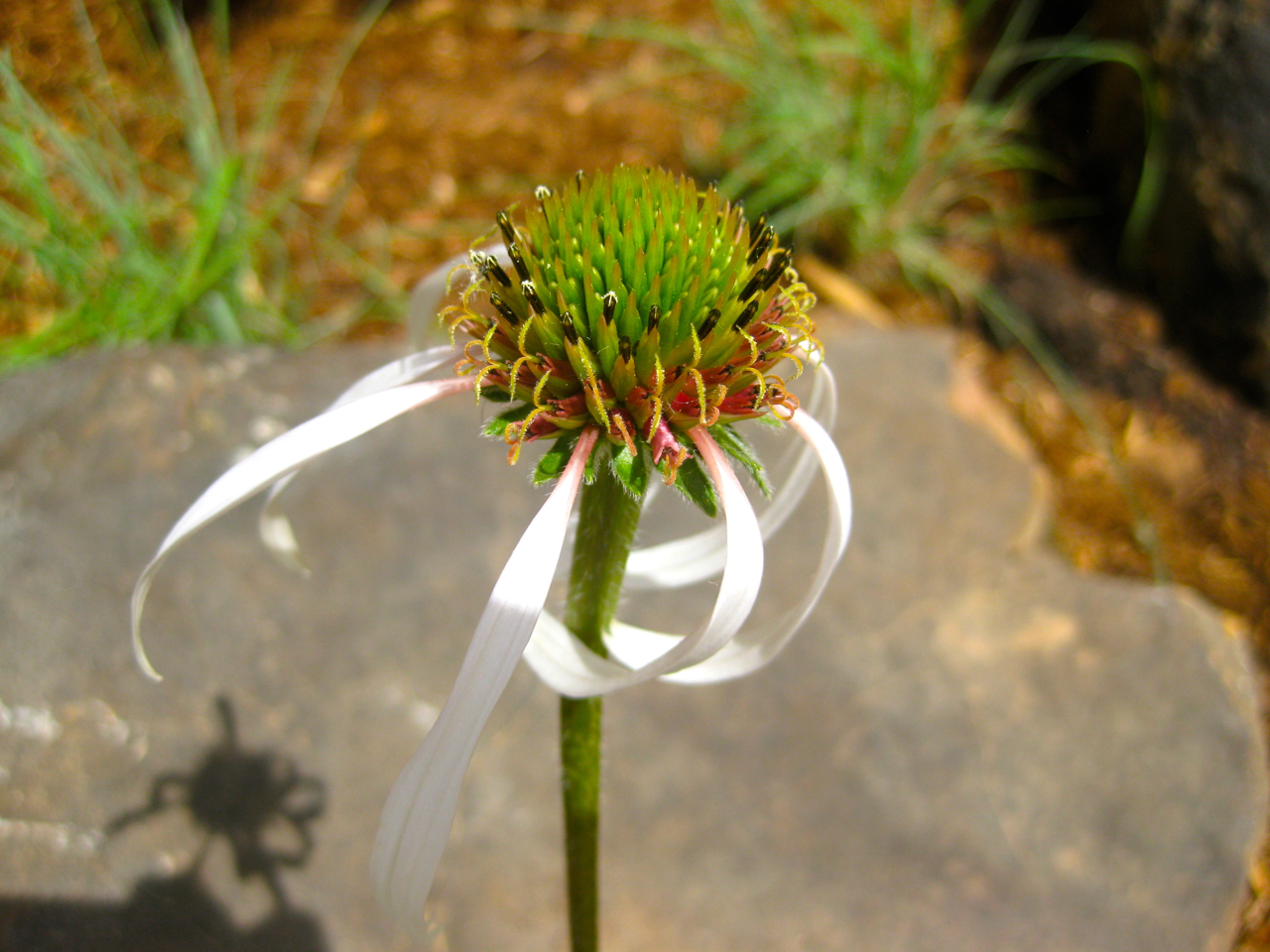Height: 2-3 feet
Spread: 1-1 ½ feet
Type: Perennial
Origin: Eastern United States including most of eastern Oklahoma
Exposure: Full sun to part Shade
Water: Dry to moderate
Edible: As a tincture can be added to beverages etc.
Medicinal: Absolutely. It has been used for centuries by Native Americans to treat anything from insect bites to the common cold. Most common to brew a tea or make a tincture from the roots, flowers and leaves.
Companions: Liatris spicata, Schizachyrium scoparium, Bouteloua gracilis,
Notes: Echinacea is one of our favorite genera of native perennials. All of the Echinacea species are beautiful, tough and useful and there are quite a few that are native to Oklahoma. Pollinators and other wildlife are also fond of Echinacea. Purpurea is the most commonly grown ornamental Echinacea but Pallida is an under appreciated standout of the genus due to it’s elegant pale pink/purple thin reflexed rays that droop down from the stately cone. They are easily grown in dry to moderate soils and excel in full sun. Very adaptable and tolerant of tough conditions, drought and poor soil as well. Commonly called the pale purple coneflower it blooms in June through July and may continue blooming until mid autumn with deadheading. They are best in mass, planted in a drier section of your perennial beds but they can also make nice specimens and work well dotted in and amongst grasses such as Bouteloua gracilis “blue grama” or Schizachyrium scoparium “little bluestem”. Ech. pallida and angustifolia often require a year to get settled and may not bloom the first year you plant them. Best chance to get a first year bloom is plant them as early as possible in spring or do a fall planting. One selection of this species called “hula dancer” is available from High Country Gardens.







